- Use a bell or horn to alert people of your presence. By law, all bikes must be equipped with a bell or horn.
- Stay visible with a white front light and red rear light or reflector. By law, all bikes must use these lights half an hour before sunset and half an hour after sunrise.
- Use hand signals when turning, changing lanes, or slowing down.
- Sidewalks are not for cyclists.
- Yield to pedestrians on multi-use pathways.
Cycling Safety and Education
Learn cycling safety tips and what rules apply to you when you are out riding.
Rules of the road
Ontario's Highway Traffic Act sets the rules of the road. The rules apply to all road users including cyclists. This means cyclists must obey the same traffic laws, signs, and signals as drivers when using the road.
A little preparation and the right equipment can make cycling safer. The Government of Ontario has useful information for safer riding on roadways on its website. Below are some additional tips.
- Leave at least a 1 metre distance between your vehicle and a person cycling when passing. This is a legal requirement of the Highway Traffic Act.
- Slow down and drive cautiously around cyclists and pedestrians.
- Check your blind spot when making turns.
- Check your blind spot when opening your door. Tip: Do the Dutch Reach by using your far hand (typically your right hand) to open your car door. This requires you to turn your body and check for oncoming cyclists.
- Always signal when making lane changes or turning.
- Never park your vehicle in a bike lane.
Hand signals help tell other road users like drivers where you intend to go. When making a turn on a roadway first shoulder check for traffic, signal your intention then check over your shoulder again before making your turn.
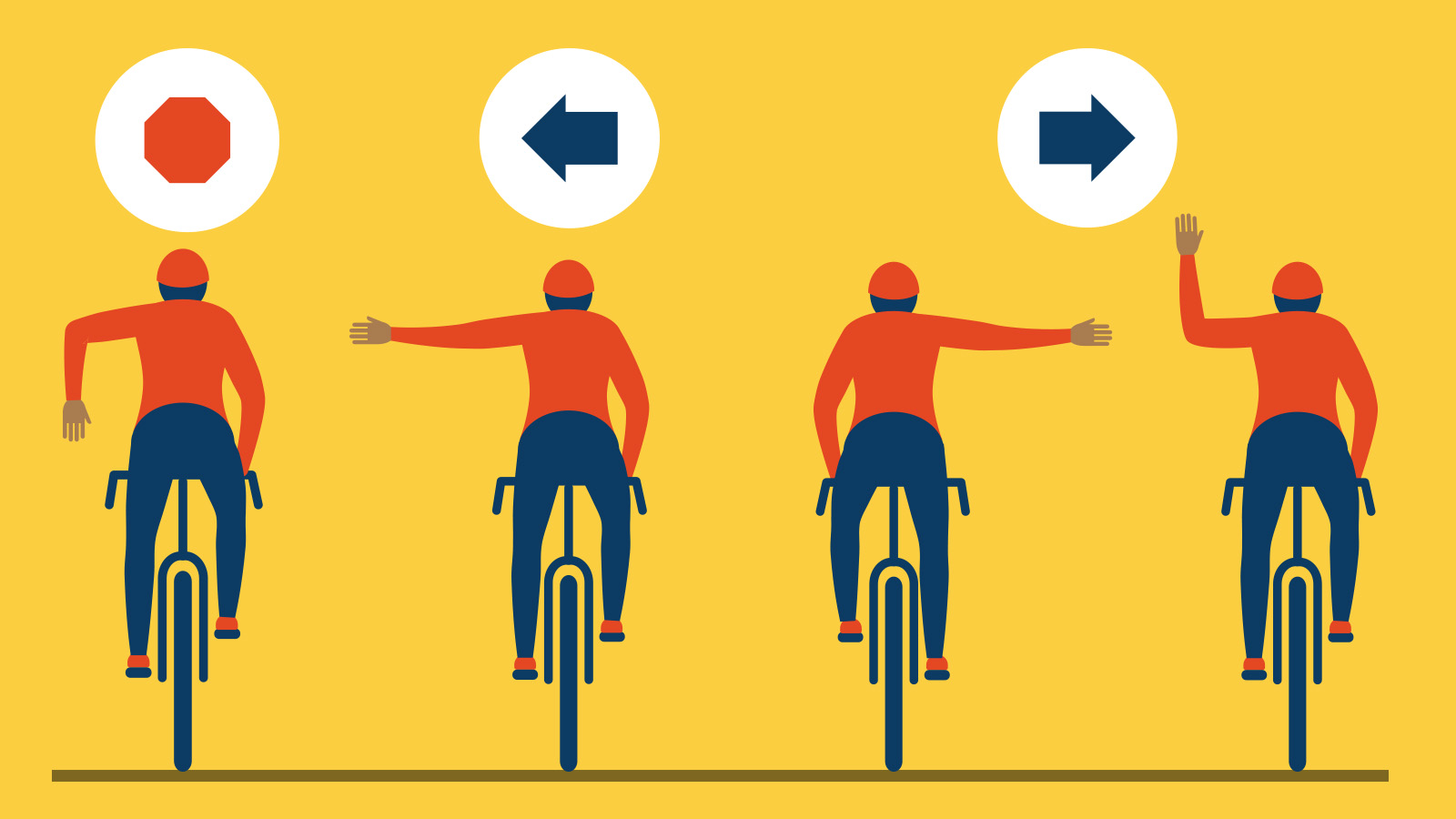
All riders under the age of 18 are required to wear an approved bike helmet. Wearing a helmet properly can reduce the chance of head injury.
To ensure your bike helmet fits properly follow these steps:
-
- Make sure there is a distance of about two fingers between your eyebrow and the bottom of your helmet.
- The straps should form a v-shape under each ear.
- One finger should be able to fit between the chin and the chin strap to ensure the helmet is comfortable and secure.
Cycling signage
While riding on roadways cyclists and drivers need to be aware of all signage, however, some signs relate specifically to cycling.
Yield to cyclist on right turn
These signs indicate places where right-hand turns cross a cycling lane. Motor vehicles must give way to cyclists in the cycling lane before making a right turn.
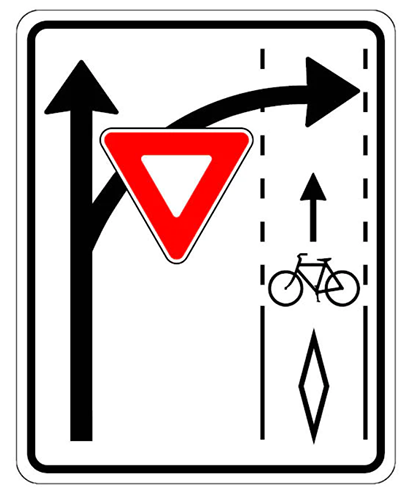
These signs mark routes that are part of Kingston's on-road bikeway. Unlike signs for dedicated cycling lanes, these bicycle route signs do not have any legal rules associated with them.
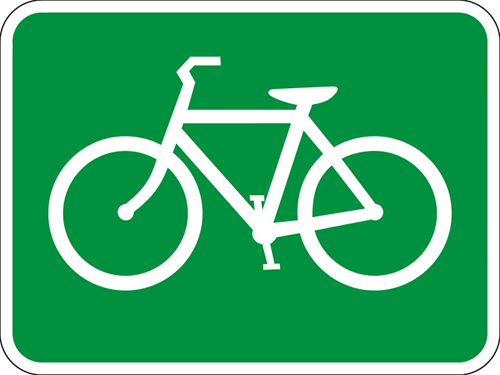
These signs tell drivers that a particular lane on the road is meant only for bicycles and is not to be used by motor vehicles.
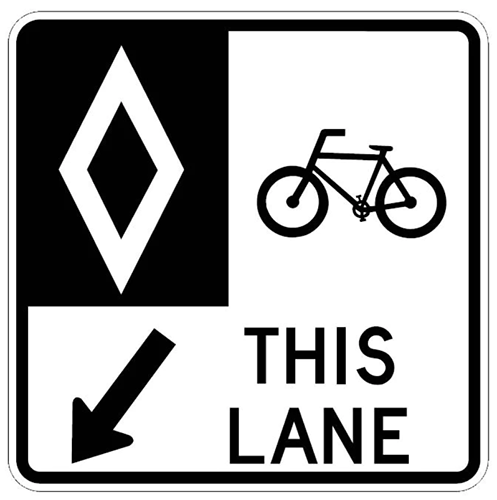
These signs let both drivers and cyclists know that a road is meant to be shared. They are often placed where a dedicated cycling lane ends.

These signs caution both drivers and cyclists that the upcoming lane is narrow and not wide enough for cyclists and motor vehicles to travel side-by-side. Cyclists might use the entire lane.
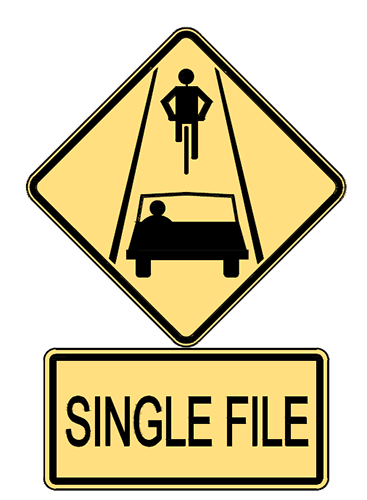
Sharrows are road markings that tell everyone to share the road, and they help cyclists know where to ride in that lane.
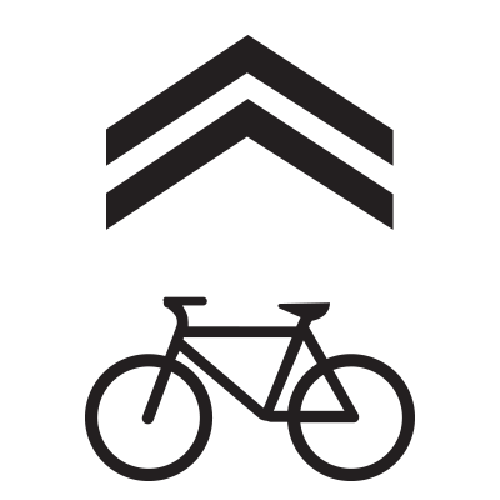
These signs show that a pathway is for both cyclists and pedestrians, and everyone should share the space. Cyclists must yield to pedestrians.
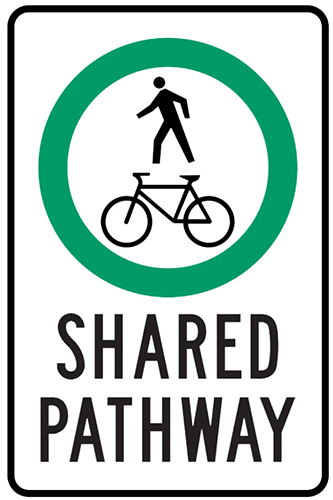
Bicycle path crossing side street
These signs warn drivers that there are bicycle crossings ahead and to be cautious when making right or left turns at the intersection.
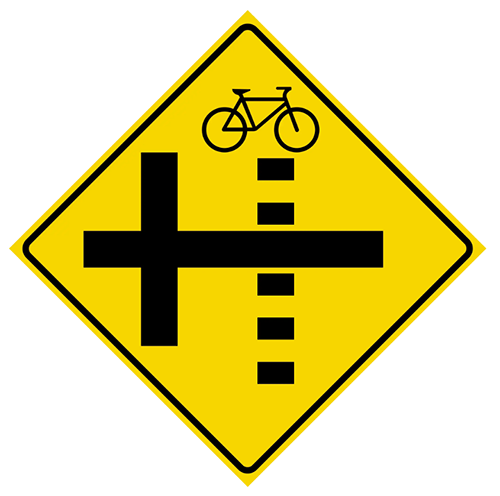
Pedestrian and bicycle crossing ahead
These signs let drivers know that a pedestrian and bicycle crossing is up ahead.
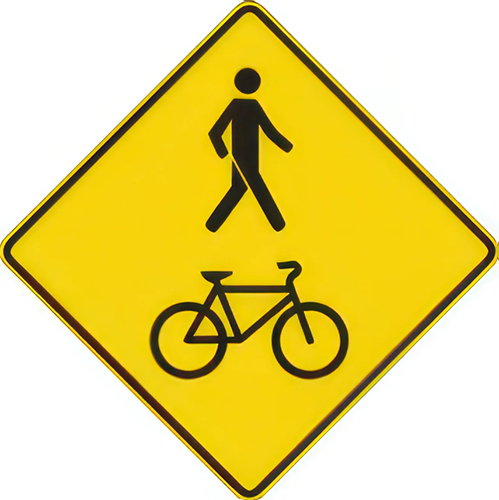
Contact Us
City of Kingston
City Hall
216 Ontario Street
Kingston, ON K7L 2Z3
Canada
contactus@cityofkingston.ca
Phone: 613-546-0000

The City of Kingston acknowledges that we are on the traditional homeland of the Anishinabek, Haudenosaunee, and the Huron-Wendat, and thanks these nations for their care and stewardship over this shared land.
Today, the City is committed to working with Indigenous peoples and all residents to pursue a united path of reconciliation.
Learn more about the City's reconciliation initiatives.



